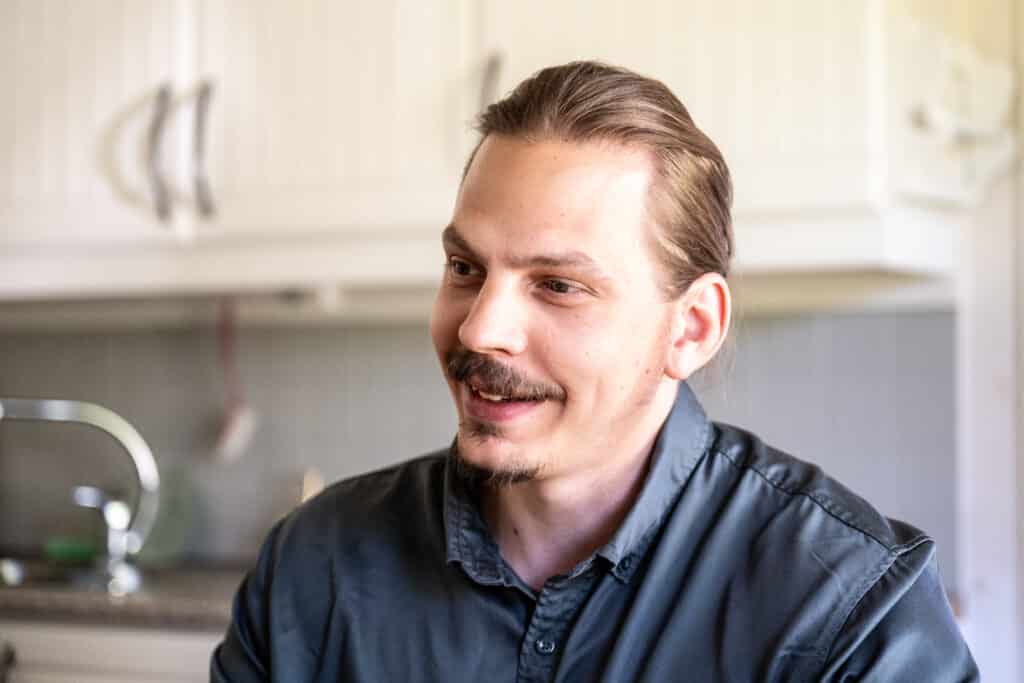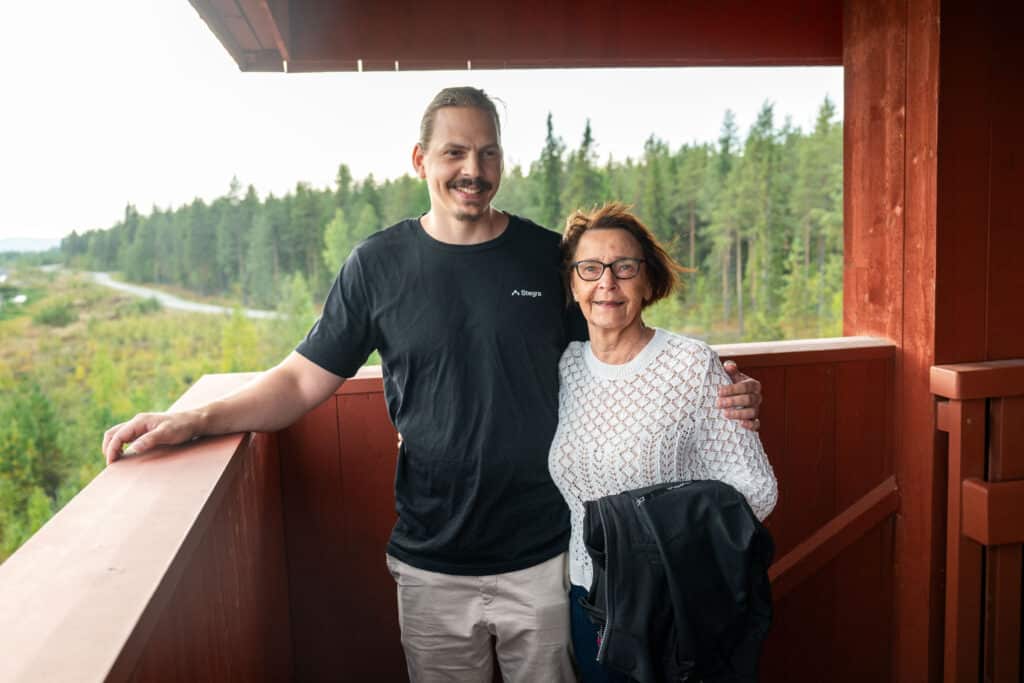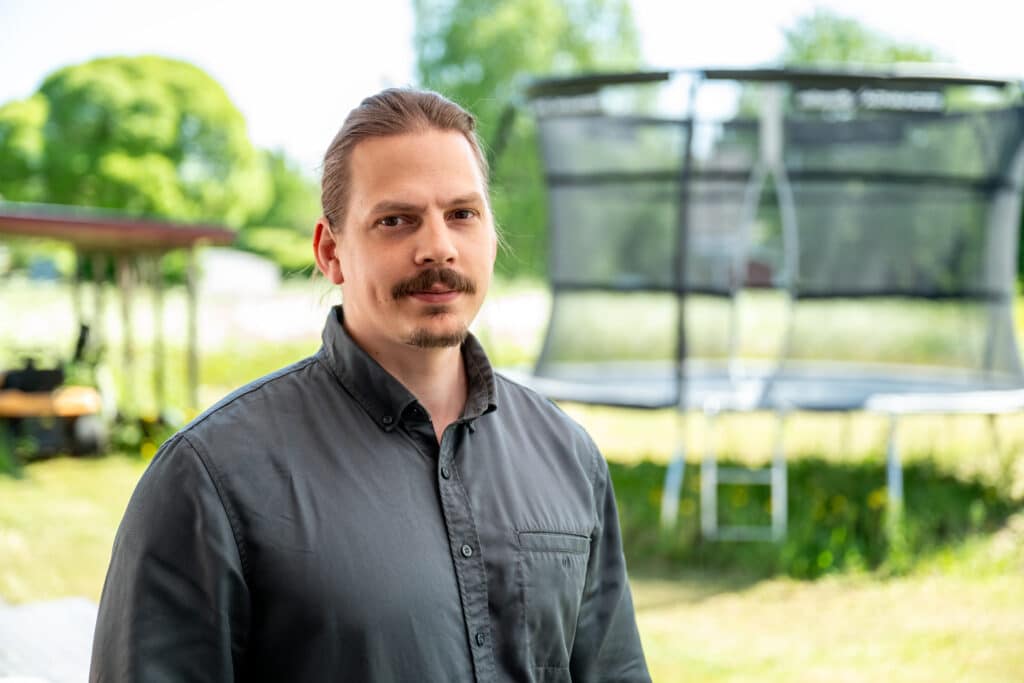Daniel Eriksson, from Sävast, left his job at the Metallurgical Research Institute Swerim to put research into practice at Stegra. On the same site where his grandmother’s house stood when he was a child, he is now part of Stegra’s growing operations.
Being part of building something that can change not just Boden, but the entire global steel industry, “tickled his brain,” as he puts it.
– As soon as Stegra appeared, I started eyeing them. It feels amazing that something so big is being created from scratch here. One of the reasons I know it works is because I’ve seen it in practice, says Daniel Eriksson.
He describes himself as a metal nerd and has always had a great interest in metals. His career began at SSAB, where he worked his way up from a young substitute through the blast furnace side to the control room alongside process engineers.

After nine years at SSAB, he was headhunted to Swerim (formerly Mefos). The Metallurgical Research Institute Swerim conducts industry-related research and development on metals and their journey from raw material to finished product.
– Everything I know about metallurgy today I learned there. It has been incredibly educational.
He now brings his knowledge into the development of Stegra, where a fully integrated, digitized, and circular facility is emerging in Boden. Stegra will become one of the world’s largest hydrogen plants and Europe’s first newly built steelworks in 50 years.
Roots in the Location
Stegra is breaking new ground, in more ways than one. Right where the facility is growing and where Daniel has his daily workplace, he played as a child.
– Yes, indeed, it was right where my grandmother’s house stood. Sometimes we say, imagine if we had known then what would be here, says Daniel.
 Together, Daniel and his grandmother Elisabeth Johansson look out from Stegra’s popular observation tower, over the large Boden Industrial Park where he played by her house as a child. Elisabeth marvels at the enormous construction now taking shape here.
Together, Daniel and his grandmother Elisabeth Johansson look out from Stegra’s popular observation tower, over the large Boden Industrial Park where he played by her house as a child. Elisabeth marvels at the enormous construction now taking shape here.
Faith in the New
Daniel carries with him an inherited belief in daring to invest and believe in the new. On his father’s side, there are roots in the mining community of Laver, a few miles from Boden. It was a state-of-the-art community for its time, created around the industry.
Today, Daniel stands in the midst of the new developments in Boden. Being able to use his experiences from various research projects and solutions to implement them on a large scale in an operation that will remain permanent, Daniel describes as the most appealing aspect of Stegra.
– I love being part of all the details, getting all the information I want and can have, and having it in front of me. And to be involved at an early stage and scale up what I’ve been part of before, he says.
He describes the impression he got of Stegra as secure and competent. Here, he is offered the opportunity for personal development while also helping to build the team. Daniel’s task is to shape the operations team around the electric arc furnace as a shift manager.
– It’s important to bring in the right people and skills. Right now, recruitment is underway for operators, mechanics, electricians, and more. Under my manager, we will be around 200 people; currently, we are just over 40.
A New Type of Job in Boden
Daniel was born and raised in Boden and lives in Sävast with his partner Towa and daughter Livia. Towa, who is a researcher at Swerim, still commutes, but it makes a big difference that one of them now works just a few minutes away from home. Both are interested in fitness and spend a lot of time together at the gym. In winter, the ski trail is just a stone’s throw away, and Daniel also has a background in motocross and enduro.

– I’ve always commuted and stayed here in Boden for the family and because I enjoy the small town. Everything is accessible, and we are close to nature. Five years ago, it was unthinkable to get this type of job here in Boden, Daniel notes.
The development and construction at Boden Industrial Park are progressing rapidly, and the goal is to start the initiation of parts of the production already next year, 2026.
– It will be powerful when we turn on the power to the electric arc furnace and see everything come to life.
Text and photo: KOMM, Bodens municipality